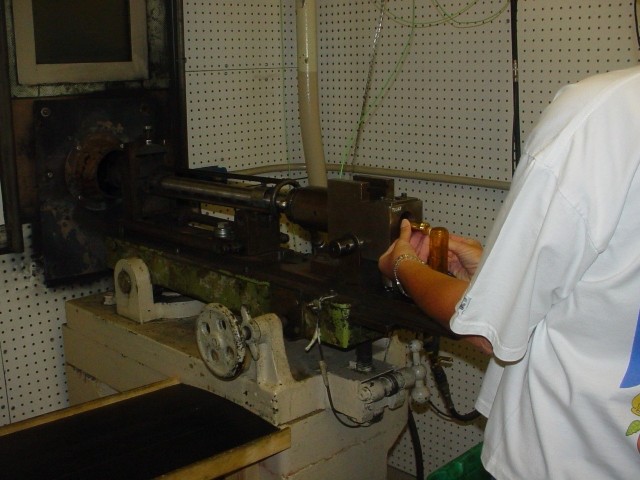INDEPENDENCE, Mo.--When a consumer purchases a product, they want to be assured that the product has met certain high standards so that it will be fit for the purpose for which it is intended.
The same is true for the warfighter in the field. But when the standard is not met, the result could be disastrous and result in injury or even death. So, in ammunition manufacturing, quality control is an especially crucial part of the process. Lake City Army Ammunition Plant in Independence, Mo., the largest manufacturer of small caliber ammunition in the United States, is the only Joint Munitions Command installation that has a full-service quality assurance testing facility.
All ammunition produced here is tested for most of all the weapons it is intended for and for every condition the warfighter would experience.
"We test random samples and have a 98 percent lot acceptance rate," said Ken McKee, chief, Quality Assurance, Ballistics Division.
The facility performs both indoor and outdoor testing and all testing is done before 11 p.m. due to the noise it produces.
For indoor testing the weapons are fired from one of 29 firing bays within the facility and each is designed to fire a particular kind of weapon and configuration of ammunition. For example, a bay would have a machine gun mounted inside of it and the ammunition tested would be the linked 5.56 mm M855; or a bay would have an M16 mounted andmagazine. The weapon is mounted to a base stand. A switch is connected to the weapon allows it to be fired remotely.
"The ammunition is fired into sandtraps and water traps," said Leonardo Ojeda, ballistics manager, Quality Assurance, Ballistics Division. "If fired into steel plates, it must penetrate or perforate the plate, depending on what the purpose of the fired round is," he said.
Although the majority of the testing that takes place here is performed on finished ammunition, one of the basic components of a cartridge, the primer, is tested here. The primer is tested for sensitivity or how much force is necessary to initiate the explosive train.
The continuous testing of already accepted ammunition takes place here, too. It is tested for reliability and interoperability with NATO weapons. Because the coalition formed for the Global War on Terror is so diverse, it must be assured that the ammunition will work with a variety of weapon makes and models. So this testing is essential. The guns that are used to perform the tests vary widely in model and age. To make sure the guns are working properly, there is a gunsmith on hand to maintain them.
"They have not changed much," said Ojeda.
He is in charge of the "gun room", which houses a variety of guns from World War I to the present day. The facility also houses an armory where unused weapons are stored along with parts for current weapons.
Ojeda is a former Marine and he spent time in Saudi Arabia and Kuwait during the first Gulf War, so he knows firsthand the importance of reliable ammunition and therefore, the importance of testing. "I would hate for a piece of ammunition to misfire and harm our troops," he said.
All standard operating procedures are strictly adhered to when testing.
"The rounds must be conditioned so that the temperature is just right and the propellant is evenly distributed. We want to make sure that all the tests are identical," said Ojeda.
Every type of bullet goes through this conditioning and it must be done in sequence. First the rounds to be tested are divided into three sets and are brought to three different temperatures.
"We have to make sure the ammo fires in all these conditions," said Ojeda. "If a gun stops working during a test, a group of individuals consisting of government personnel, engineers and the gunsmith examine all the evidence in order to determine what caused the stoppage," said Ojeda. "Once the ammunition is fired, the spent cases are further inspected for any visible defects, and to insure that the case has not broken apart or was not extensively damaged by the actions of the weapon."
The approximate shelf life of the ammunition is also tested here. "We place the ammunition in a chemical solution. This process allows for the brass imperfections to be easily identified" said Ojeda. "Any potential defects in the brass will become more apparent due to the reaction of the solution. Theoretically, the test makes it possible to identify flaws in the brass that under normal conditions, could only be noticed after a lengthy period of time."
There is also a test for waterproofing the ammunition. "The rounds are put in water and have pressure applied to them. This tests the seal of the cartridge in case the ammunition is immersed in water," said Ojeda. "This way our warfighters knows that a round will fire even if it is wet."
All in all, the testing of ammunition is a rigorous process but well worth it, for no task is too difficult if it means making sure our fighting men and women get safe, quality ammunition that does what it is supposed to do. And Ojeda takes this personally: "They are my brothers in arms," he said.


Social Sharing